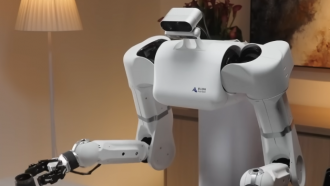
Humans have faced very difficult times, especially when it came to predicting weather conditions and climatic scenarios. Imagine if the world knew that a certain devastating earthquake was about to erupt. Millions of lives could be saved regardless. The old-age proverbs were a thing of the past. Now, we have high-tech computers and AI to do all the work for us. This also includes weather forecasting.
The global weather forecasting market was valued at USD 2.39 billion in 2022 and is expected to grow by more than 6% by 2030, according to Grand View Research. This growth is easily the effect of AI and Machine Learning advancements in the weather forecasting industry.
You can search and find some studies on the topic mentioning the positive role of AI models fixated on weather forecasting, which supposedly outperforms old methods by 10–15% in predicting precise weather patterns. This note backs up the fact that AI can now give even minute and extreme details about weather conditions, which gives enough time to prepare for adverse weather conditions.
AI-Powered Smart Home Devices: A New Frontier in Weather Awareness
While traditional weather forecasts provide a regional overview, smart home devices powered by AI are personalizing any kind of digital experience, including weather data for individual users. These devices are equipped with advanced sensors and machine-learning algorithms. Because of these, they can analyze local weather patterns, historical data, and even user preferences to provide hyper-local weather forecasts.
A smart speaker may tell you it will rain tomorrow while also letting you know in the morning that you should probably take an umbrella with you. Another great idea is a smart thermostat. It will learn about your preferred temperature ranges. Afterward, the temperature will be adjusted accordingly based on the heatwave forecasts. These are very simple examples of how new smart home devices incorporated with AI can help provide a very smooth and personalized experience in one's day-to-day life.
AI-incorporated smart devices will definitely lead to a more convenient way of living. Different people with different disabilities and issues exist in this world. Many of their illnesses, like allergies, could be taken care of easily by using AI. This way, they will receive a real-time update about specific allergens in the air, like pollen particles.
The Power of Big Data: AI for Pattern Recognition in Weather Systems
Weather forecasting traditionally relied on complex computer models that copied atmospheric conditions. However, the weather data is so much that these models were restricted by its sheer volume and complexity. This is where AI shines. Machine learning algorithms excel at identifying patterns in vast datasets. This is a skill that proves invaluable in weather prediction.
By analyzing historical weather data, AI can recognize subtle patterns and relationships that might elude traditional methods. This includes analyzing satellite imagery and real-time sensor readings. These patterns can then be used to refine weather models. This leads to more accurate forecasts, particularly for localized events like thunderstorms or sudden wind gusts.
Speeding Up Predictions: Real-Time Analysis with AI
Responding to weather systems like hurricanes and tornadoes in time is extremely important in terms of weather forecasting. Therefore, they require quick and accurate predictions to ensure public safety. The speed at which AI processes data in such a short time is a game-changing advancement.
Weather data from radars, satellites, and ground stations is analyzed by AI algorithms in an instant and in real-time. This proves AI to be way faster than old methods. Because of this, AI can provide almost instant updates on weather forecasts. It can also precisely track the movement, direction, and intensity of weather events.
One example is Google DeepMind's AI model, GraphCast. In just under a minute, it can process weather data and generate forecasts up to ten days in advance. This is a significant improvement over traditional models that can take hours. The real-time analysis empowers meteorologists to issue timely warnings. This way, it allows communities to prepare for potential hazards with greater efficiency.
Beyond Predictions: AI for Climate Change Modeling
AI can be used for weather forecasts beyond short-term predictions. Its algorithms are defining a new era to refine climate change models. This helps us understand the long-term trends and impacts of a planet troubled by Global Warming.
AI identifies complex climate scenarios with great accuracy. It does so by analyzing vast amounts of data on atmospheric conditions, the temperature of the ocean, and greenhouse gas concentrations. Scientists can deploy strategies according to the data they receive. These strategies will then allow them to cater to climate change and adapt to its consequences quickly as well.
Recently, a study by researchers at MIT used AI to analyze climate data. They concluded that AI outperforms traditional models in predicting extreme weather events like heatwaves and droughts. This ability to anticipate the long-term effects of climate change allows for proactive measures. These include developing drought-resistant crops or fortifying infrastructure against extreme weather events.
The advent of AI algorithms in the weather forecasting industry marks a massive leap towards a more positive and safe future. While AI increases the pace of every system, it's also quite uncertain. But with AI's assistance, we can move towards a future of more informed decisions and greater preparedness in the face of ever-changing weather patterns.
* This is a contributed article and this content does not necessarily represent the views of techtimes.com





